At its centennial, the Bauhaus’s design legacy seems more present than ever, in spite of the fact that the famous German school of design lasted merely 14 years and enrolled fewer than 1,400 students. Known for its interdisciplinary focus, merging arts, crafts, industrial design, and architecture, its attention to scale went from a cream pitcher to a city plan. In its short life, it had three directors and three locations.
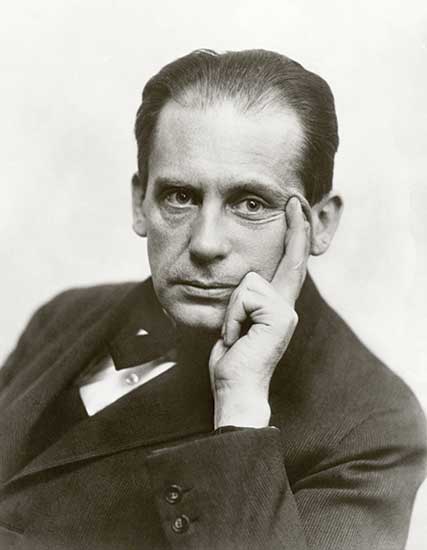
Founded by Walter Gropius in Weimar in 1919, it moved to Dessau in 1925. When Gropius left in 1928, architect Hannes Meyer took over until 1930. At that point, Ludwig Mies van der Rohe moved the school to Berlin, where he led it until political pressure forced him to close it in 1933.
Now, 100 years after its founding, a new museum devoted to the Bauhaus has just opened in Weimar (page 134); another will open in Dessau this fall, while yet a third is planned for Berlin. Over the years, digitization has made remote collections, archives, and other documentation readily available, while early masterpieces such as Ludwig Mies van der Rohe’s Barcelona Pavilion (1929), Walter Gropius’s Dessau Bauhaus Building (1926), and the Mies Tugendhat House in Brno (1930) have been restored or reconstructed. New publications and films are coming out, along with hundreds of exhibitions. The influence of the original participants, plus their activities, ideas, and their successors are being explored far beyond the Bauhaus birthplace. The media and social networks are full of the school’s global impact. But how profound was the reach of the Bauhaus and its influence, especially in America?
As early as the 1920s and 1930s, the U.S. and the Bauhaus formed an extraordinary transatlantic relationship when American visitors and students explored the school in its various locations, with the arrestingly modern Dessau Bauhaus Building providing a particularly major attraction. Bauhaus artists looked to America for inspiration, and, in turn, audiences began to encounter the work here. In 1924, the art collector Galka Scheyer began promoting the Bauhaus painters Lyonel Feininger, Paul Klee, and Wassily Kandinsky, along with Alexei Jawlenski, under the name the Blue Four, in galleries in New York and Northern California.
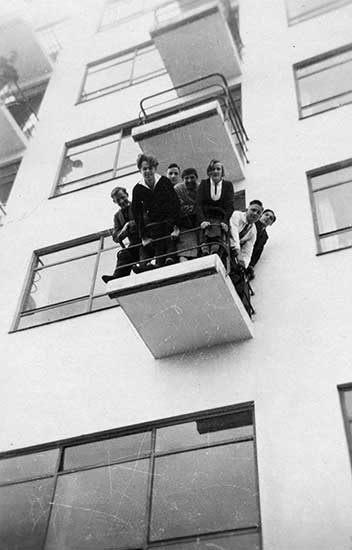
Then, in 1930, American audiences were treated to the first Bauhaus exhibition in the country, Bauhaus Weimar, Dessau. Organized at Harvard University by recent graduate Lincoln Kirstein and fellow students of the Harvard Society of Contemporary Art, the exhibition traveled to New York and Chicago. Of course, the Bauhaus became more widely recognized in 1932 as part of the Museum of Modern Art’s Modern Architecture: International Exhibition, curated by Philip Johnson and Henry-Russell Hitchcock under the auspices of museum director Alfred H. Barr Jr. Accompanied by an exhibition catalogue and a book, it portrayed Bauhaus founder Walter Gropius and subsequent director Ludwig Mies van der Rohe as the leading protagonists of the European avant-garde, along with Le Corbusier and J.J.P. Oud. Influential architecture magazines such as RECORD, Architectural Forum, and Pencil Points reinforced the recognition.
The closing of the Bauhaus during the Third Reich led to the diaspora of the school’s faculty, many of whom emigrated to the U.S. and other countries. Both Barr and Johnson were instrumental in helping to relocate these designers and artists, since they knew the school firsthand from their travels to Europe, beginning in late 1920s when they began formulating the 1932 exhibition.
Soon after the show, Johnson recommended that Bauhaus artist Josef Albers be hired by John Andrew Rice, the founder of Black Mountain College in North Carolina in 1933. At Black Mountain, Albers, who had been a student, teacher, and then deputy director of the Bauhaus, continued his investigations into the nature of materials, color, and visual perception, while teaching his highly influential foundation course—perhaps today’s most relevant inheritance from the Bauhaus. His wife, Anni, expanded on her distinguished career as a weaver, which she began at the Bauhaus. Albers eventually left, in 1950, to teach at Yale University’s School of Art.
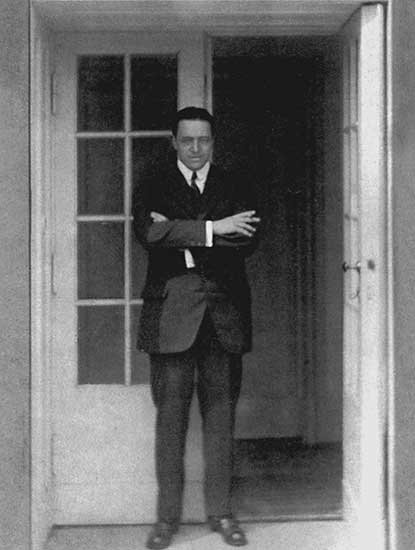
In 1937, Walter Gropius came to Harvard University to assume the chair of the Graduate School of Design, at the behest of the new dean, Joseph Hudnut. Mies van der Rohe arrived in Chicago in 1938 with the help of colleagues and former students, including Bertrand Goldberg and Michael van Beuren, to head the Armour Institute. When it merged in 1940 with the Illinois Institute of Technology, Mies designed the now historic main campus.
Some of the Bauhaus-related efforts in this country are less well known today. For example, in 1937, László Moholy-Nagy established the New Bauhaus in Chicago. The former instructor of art, photography, and metalwork at Weimar and Dessau, from 1923 to 1928, was invited to the city by the Association of Arts and Industries. The innovative school, dependent on private funds, had financial problems and closed in 1938. But in 1939, Moholy-Nagy opened the School of Design, whose advisors included Gropius and Hudnut. By 1944, the school’s name had changed to the Institute of Design. In 1949, three years after Moholy-Nagy died, it folded into IIT.
In 1946, Walter Paepcke, chairman of the Container Corporation of America and patron of Chicago’s New Bauhaus, enlisted graphic designer Herbert Bayer to come to Aspen, Colorado, to help shape the campus of the new Aspen Institute’s facilities. Previously, in 1935, Mills College in Oakland, California, offered Alfred Neumeyer, a Berlin-based art historian, a position as a professor and director of the museum, which showcased Bauhaus art.

In the end, none of these initiatives could match the influence of the two famous Bauhaus architects, Gropius at Harvard and Mies at IIT. Once they set foot on American shores, the Bauhaus reception here was dominated by architecture, as Mies van der Rohe’s Farnsworth House (1951), Crown Hall at IIT (1956), and the Seagram Building (1958) show. Gropius’s own status was helped substantially by another exhibition mounted at MoMA, in 1938, Bauhaus 1919–1928, covering the exact years he was director. Mies, the last director of the Bauhaus, opted out of participating in the show. Hannes Meyer, the second director, was ignored. While Mies’s success did not depend upon his Bauhaus affiliation, Meyer never achieved recognition in this country, particularly since he moved to the USSR, then Mexico, and finally Switzerland.
One of the biggest misperceptions of the Bauhaus is that there was one unified set of principles. The three directors’ approaches differed in crucial ways. Gropius’s vision to meld pragmatic design, quality, and affordability with “beauty” proved to be idealistic. Hannes Meyer defined architecture as a “collective, economic, and function-oriented process” for the benefit of the people, and at the cost of artistic expression. Mies avoided the challenge altogether by disregarding affordability—and the social agenda at the core of the Bauhaus— in favor of a spiritual and aesthetic understanding of building as art—Baukunst.
In America during WWII and immediately after, the influence of the Bauhaus’s leading principals was limited. In those years, the Bauhaus emigrés were confronted by an anti- German atmosphere as a number of them, including Gropius, came under FBI investigation. If their language and nationality projected a sense of “otherness,” so did their architecture. In traditional New England, Gropius’s simple “ultra-modern” house in Lincoln, Massachusetts, which he had built in 1938, didn’t quite fit.
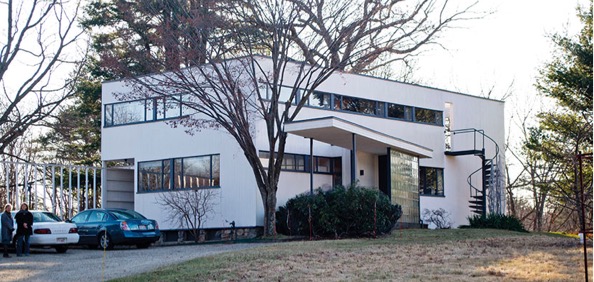
House by Walter Gropius with Marcel Breuer in Lincoln, Massachusetts, photo © Josh Graciano
The Bauhaus’s roots were particular to its own time and place and simply were not shared with other countries’. Formed in the aftermath of WWI, the school had sought an optimistic new beginning in which its artists were determined to build a better world, with a basis in the Enlightenment. But by the 1960s, Modernism everywhere was being questioned. The Holocaust and the Gulag, WWII, and Hiroshima had exposed the dark side of technology and shattered the trust in reason. In the 1970s and ’80s, such theoretical approaches such as Postmodernism and Deconstruction called into question the Eurocentric idea of a linear and continuous historical evolution, cultural tradition, and philosophy. Still, many maintain today that a pluralistic modernism is an ongoing project.
The Bauhaus arguably has received more attention than any other school or artistic movement of the 20th century. The centennial reminds us that it was, in the first place, a school of design, with profound connections to the material world, industry, and a mission to solve problems to high aesthetic standards.
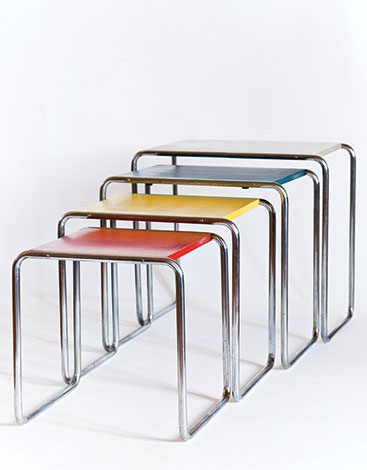
But the name “Bauhaus” is often taken out of its original context, because there is money in the branding of all things Bauhaus. One memorable legal fight broke out over the rights to Marcel Breuer’s small B-9 side table. Breuer, contrary to his colleagues, had not passed his artistic ownership on to the Dessau Bauhaus, where he had designed it. By 1999, four different companies claimed legal rights. One company was Knoll International. A number of high-end manufacturers, such as the German wallpaper company Rasch, sell Bauhaus reproductions successfully or have developed new “Bauhaus” product lines based on a history with the Dessau school.
The impact of the Bauhaus is perhaps more profoundly evident in its general principles of forms and materials true to an object’s nature and function. Bath-fixture manufacturer Dornbracht and jewelry-maker Niessing are among those paying homage to the Bauhaus, and Terence Conran has cited it as a major influence on his furniture chain Habitat.
If anyone in the corporate world recognized the Bauhaus for its potential, it was Steve Jobs, who came to define Apple as a design rather than a technology company. Jobs hired German industrial designer Hartmut Esslinger and then the British talent Jonathan Ive—both from Bauhaus-informed institutions or schools of thought—to develop Apple’s design sensibility.
After 100 years, assessments of the Bauhaus may differ as much as the multitude of aspects of its ever-evolving identity. Yet the school showed that interdisciplinary skills and collaboration, with strong philosophical positions as well as determination and idealism, led to innovative solutions that still influence theory and practice.













